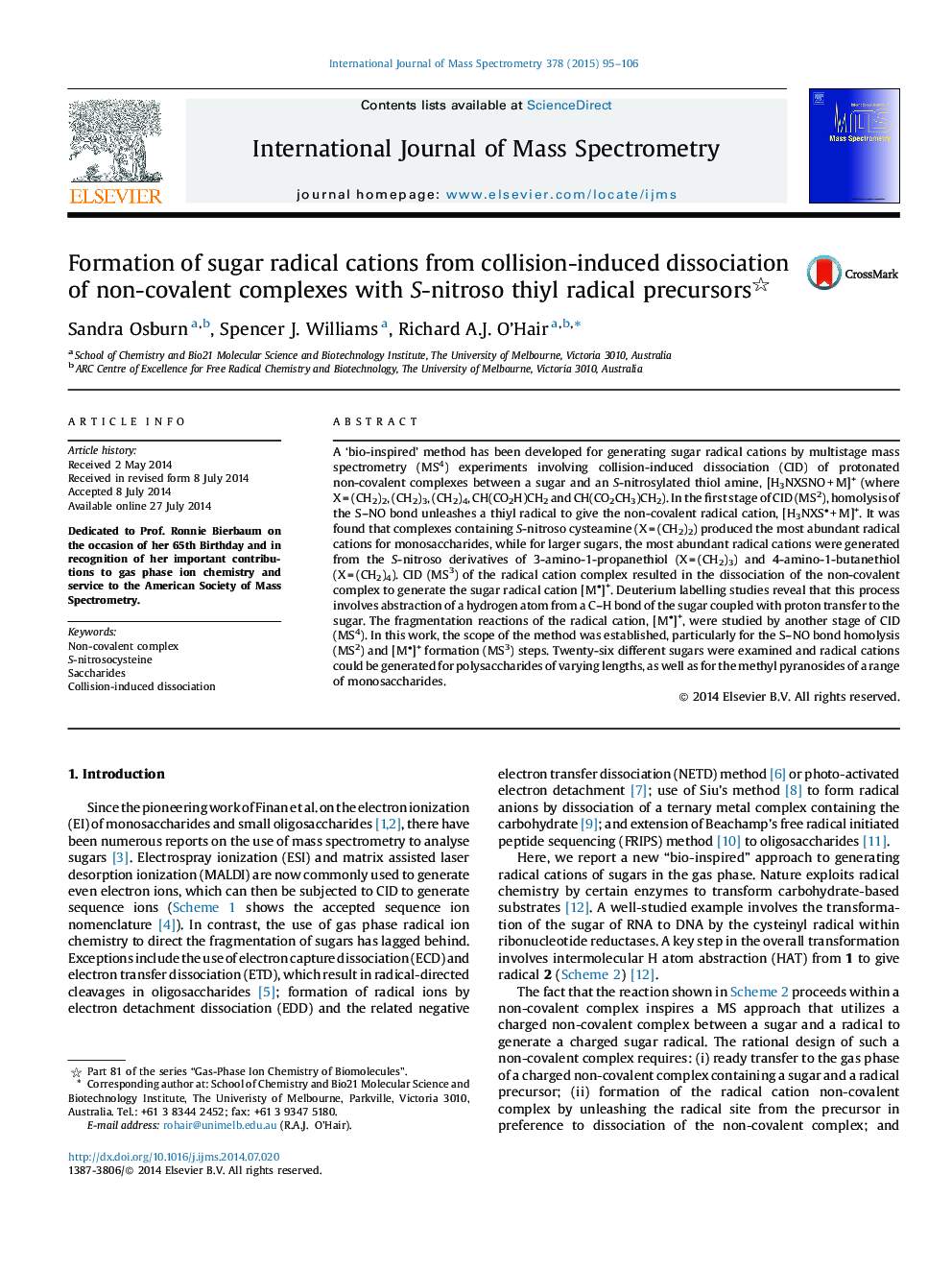| کد مقاله | کد نشریه | سال انتشار | مقاله انگلیسی | نسخه تمام متن |
|---|---|---|---|---|
| 1192085 | 1492250 | 2015 | 12 صفحه PDF | دانلود رایگان |

• Sugar radical cations were generated from non-covalent complexes via the CID sequence: [H3NXSNO + M]+ → [H3NXS + M]+ → [M]+.
• Deuterium labelling reveals that [M]+ is formed by H atom abstraction from a sugar C–H bond followed by H+ transfer.
• Yields of [H3NXS + M]+ and [M]+ are influenced by M and X. Monosaccharides give high yields of [H3NXS + M]+ for X = (CH2)2.
• For di- through tetrasaccharides, high yields of [H3NXS + M]+ occur when X = (CH2)3 and (CH2)4.
• For maltopentose, maltohexose, and maltoheptose very little of [H3NXS + M]+ is formed, regardless of the amine thiol used.
A ‘bio-inspired’ method has been developed for generating sugar radical cations by multistage mass spectrometry (MS4) experiments involving collision-induced dissociation (CID) of protonated non-covalent complexes between a sugar and an S-nitrosylated thiol amine, [H3NXSNO + M]+ (where X = (CH2)2, (CH2)3, (CH2)4, CH(CO2H)CH2 and CH(CO2CH3)CH2). In the first stage of CID (MS2), homolysis of the S–NO bond unleashes a thiyl radical to give the non-covalent radical cation, [H3NXS + M]+. It was found that complexes containing S-nitroso cysteamine (X = (CH2)2) produced the most abundant radical cations for monosaccharides, while for larger sugars, the most abundant radical cations were generated from the S-nitroso derivatives of 3-amino-1-propanethiol (X = (CH2)3) and 4-amino-1-butanethiol (X = (CH2)4). CID (MS3) of the radical cation complex resulted in the dissociation of the non-covalent complex to generate the sugar radical cation [M]+. Deuterium labelling studies reveal that this process involves abstraction of a hydrogen atom from a C–H bond of the sugar coupled with proton transfer to the sugar. The fragmentation reactions of the radical cation, [M]+, were studied by another stage of CID (MS4). In this work, the scope of the method was established, particularly for the S–NO bond homolysis (MS2) and [M]+ formation (MS3) steps. Twenty-six different sugars were examined and radical cations could be generated for polysaccharides of varying lengths, as well as for the methyl pyranosides of a range of monosaccharides.
Figure optionsDownload high-quality image (113 K)Download as PowerPoint slide
Journal: International Journal of Mass Spectrometry - Volume 378, 15 February 2015, Pages 95–106